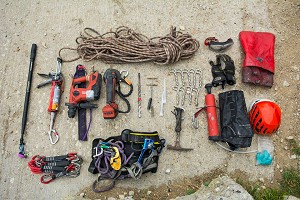
In this article, Sports Developement Officer for the MCofS, Kevin Howett looks at the history of Farrletter and the debate that has gone on about whether the crag should be bolted, following the bolting of three lines earlier this year.
In recent months there has been a resurgence of a 'to bolt'/'not to bolt' discussion about a Scottish crag. A thread was started on UKClimbing.com in February when the "Jungle Drums" brought to light that a few of the routes at the Speyside crag of Farrletter had been retro-bolted. There are (to date) over 10,000 views and 251 replies, which is one of the biggest on the forum by some way! As usual on such a forum there is the normal ill-informed comment, side-track arguments, as well as a whole rainbow of views, and so this article hopes to throw more light on exactly what the facts are in order to help the debate.
Firstly it's worth investigating the history of the Crag. Farrletter is north-facing, in the trees just 2 minutes'walk from the road; gently overhanging schist, offering bold strenuous climbing mainly in the high E grades. There are 21 climbs pretty tightly packed into a small area but despite their proximity to each other, they were considered worthwhile because they are so sustained.
Most of the routes were very serious propositions, with a mixture of pre-placed pegs, and some key runners which are hard to find and had traditionally always been described in any guide. These are even more serious today as many of the pegs have rusted and been removed; in addition, the landing is not great and a fall from any of the more serious climbs would end in a ground fall.
The crag's development has almost all been done by local climbers. The first documented route was Strike One (E2 5b) by John Lyall in 1983. Blyth Wright and Keith Geddes from Glenmore Lodge, 'rediscovered' the crag in the spring of 1985 and repeated this and climbed Farr One (E1 5b), but failed on a line later to become Too Farr for the Bear (E4 5c) – the best route on the crag and the best protected (despite the ominous looking grade!). They passed on the knowledge of the crag to Andy Cunningham and Andy Nisbet. The pair of Andys cleaned and climbed many of the lines at E4 and below, including Too Farr for the Bear by Cunningham and The Art of Coarse Climbing (E5 6b) by Nisbet (heavily pre-practised, and with a long pre-placed sling on a peg).
By 1986 the crag had become popular for top-roping. In 1988, Alasdair Ross climbed the Master Farrter (E5 6c) by a line which breached the smoother right-hand walls and in 1990 Martin Burrows-Smith adopted the crag and soon proved that the smooth walls were vulnerable anywhere at a determined 6b as he climbed eight more routes in the E5 grade. He led the routes with Allen Fyffe, Andy Cunningham and Libby Peter (amongst others), ground up after cleaning which led to several ground falls and at least one trip to Raigmore A&E.
Nothing more was climbed until John Lyall returned in 2007 and established Spark to a Flame (E1 5b) and in 2009 Steve Johnston produced Farr Harder (E6 6b), using peg runners on climbs either side to protect a very hard V7 first half (pegs which are no longer there).
Farrletter has fallen out of favour for leading, especially as most of the pegs have rusted away, and most ascents are top-roped. Some routes which are not top-roped, particularly the diagonal ones, have overgrown and will need cleaning again for ascents and local outdoor centres use it for abseiling so a couple of the routes are usually muddy. The top of the crag is steep with a secondary crag along the right hand side, making topping out difficult on some routes. This, and because of the top-roping predominance there are numerous in-situ slings round trees from which to lower-off, as well as one old bolted lower-off of unknown origin!
The crag was almost enclosed by thick trees and never saw the light of day, but a few years ago the local outdoor centre approached the local Forest Enterprise and they arranged for the trees to be cleared. It now stands in an open area and is much more amenable (but only with slightly fewer midges).
This brings us on to the more recent history: After Scott Muir opened the Extreme Dream climbing wall in Aviemore, he was looking for a possible sport venue and extensively cleaned and then bolted a section of The Badan. This was mainly on an area which had previously not been climbed, except for one of the two trad routes from the 1980's, The Bad Uns, first climbed by Keith Geddes and who was happy for it to be cleaned and bolted (the crag had become overgrown). However, the bolts were quickly removed by local climber John Lyall.
Scott held a straw-poll at the climbing wall to find out climbers' views about replacing these bolts and also the possibility of bolting Farrletter. The first ascentionists of the routes at Farrletter had all been approached independently at the time by Andy Nisbet and had agreed to the retro-bolting of their routes; all except John. The poll results at the Extreme Dream Wall were: 49 for and 1 against bolting Farrletter; and 48 for and 2 against re-bolting The Badan. So locally at least there was some consensus to bolt these two crags, but there were still too many objectors for action to be taken.
There has been reference made to the MCofS Bolts policy in the discussions on the UKC forum but this Policy dates back to 1990 and there has been a fair amount of further discussion about the issue since then with additional clarification and amendments made to the Policy. Discussions included the idea of the 'feel of the crag' as an indicator of potential sport venues in the future, but this could not be fully worked up.
However, a discussion by some of the main Scottish climbing activists was held to do just that and a draft statement was issued for comment on our website and described in Scottish Mountaineer Issue 45 November 2009. Guidance was then issued as a 'Scottish Climbing Code' and published on the website in 2009 .
Coincidentally, MCofS was approached at this time by FC regarding their liability at Farrletter. Having cleared the forest below the crag, they were concerned about the in-situ protection (the slings and pegs) and their liability if these should fail through lack of maintenance. They had also been approached about the potential development of sport climbing using bolts.
After a meeting at the crag between the Forest Manager, our Access Officer Hebe Carus and myself, and following further discussions with various interested bodies, MCofS produced a statement describing how climbing is undertaken in Scotland in relation to the Land Reform Act, which the Forestry Commission was persuaded would help them accept an unregulated system of climbing; in other words, allowing climbers to police themselves and their climbs.
This statement needed to explain how we approach our sport, including the placement and use of in-situ protection (pegs, slings, hammered nuts as well as bolts). The resulting final Climbing in Scotland Statement is aimed at landowners and was published in Scottish Mountaineer Issue 48 August 2010 and essentially contains the key elements of the Scottish Climbing Code.
This finally brings us up to the current situation when three lines at Farrletter were retro-bolted this year. I contacted the climbers responsible and found out why they decided to act. Ross Creber was the main person responsible. Ross has been climbing since an early age but stopped to pursue a career as a professional cyclist. Since finishing competitive cycling he is now back into summer and winter climbing in a big way. He has been working in Aviemore for the past year as an instructor.
He was helped by Rafael Salazar. 'Rafa' moved to Scotland from the Basque country 14 years ago, and has an Outdoor Education Degree from Strathclyde University. He has been freelancing for over 10 years and now works full time at Lagganlia Outdoor Centre. He has an MIA (and nearly MIC) and has climbed extensively in this country in winter and summer.
Ross explained why they bolted the three lines, "I have been climbing at Farrletter for over three years and think it's a great little crag close to Aviemore, Kingussie and Newtonmore. Its steep, sheltered nature means it often remains dry when other venues are wet. I have led many of the routes there including the crag classic 'Too Farr for the Bear'. One of the main characteristics of the crag is its distinct lack of protection on the steeper lines, except for the many in-situ pegs which have now been removed as they were rotting. Myself and Rafa had over the years heard many people talk about Farrletter's potential as a sport venue and decided to go ahead and place bolts on three of the lines. These were fantastic climbs at the grades of 6c+, 7a+ & 7b+. Since the bolts were placed they were very positively received around the Strath and had people travelling to Farrletter to climb, which is a rarity!"
However, in February, Ross and Rafael found that the bolts had been chopped. Ross said, "It was a gutting sight after the hours of effort we put in, not to mention the money spent on the best bolts we could buy, and particularly after the support we had to go out there and create some fantastic local sport routes." The bolts have been chopped by persons unknown (no one has yet come forward!), but those known locally to be opposed have been ruled out. Whoever it was, it was done in a rush; the 8mm stainless steel bolts are now reduced to 2cm sharp spikes protruding from the rock. You would not want to hit them in a fall from attempting to climb the lines in traditional style!
Ross feels this was a negative act. He says "It was clearly a statement against sport climbing and the prospect of bringing people to a crag that rarely got climbed on except the occasional person rigging up a top rope. The bolts were placed on lines that previously used pegs for the first ascent and had not had a trad lead for many moons."
The bolted lower-off that was already there had not been touched, yet the new ones had been chopped. The old lower-off allowed the trad lines to be finished easily without a long traverse to reach an alternative sling. It seems like a case of double standards. Ross concludes, "We have a great number of people locally and nationally who support us in what we did and who are equally disappointed to hear the bolts have been chopped."
So, what now? The crag fits many of the criteria for suitability as a sport venue in the Scottish Climbing Code mentioned earlier. The requirements for retro-bolting are also almost satisfied; there is strong local support for bolting Farrletter and all the first ascentionists except one are in favour (although his routes should perhaps be left as he wishes). One of the first ascentiionists, Andy Nisbet, associated more with adventurous big mountain routes, but recently the Coordinating Author of Scottish Sport Climbs said "the crag would make an excellent sport venue, and I still hope it will become so." If those who chopped the bolts came forward and explained their reasons, and some consensus nationally could be agreed then perhaps a way forward could be found... The MCofS hopes we can help the debate through this article and we would urge climbers to contact us with comments by email to: [email protected]. We shall run a follow-up in the next edition of Scottish Mountaineer 'e-active'.
"I feel that it could be an ideal little sport crag for Speyside regulars. With intelligent bolting and a few shared lower offs, I'm sure it could become a very welcome, challenging but entertaining and rewarding training venue for local and visiting climbers as long as there is still some respect for the original first ascenionists." Martin Burrows-Smith
"The pro-bolt arguments I've heard are basically that people don't want to try the routes in their current state. They're too hard or too bold. I think this is because there are very few folk showing the way by climbing these types of routes in the area. Let's be honest, in North Wales people would be lapping the routes, and they would be clean, chalked and popular. Blatant retro-bolting because we're not good enough is a pretty poor show!" Gaz Marshall
You can read more on The Scottish Climbing Code here and the Climbing in Scotland Statement here.


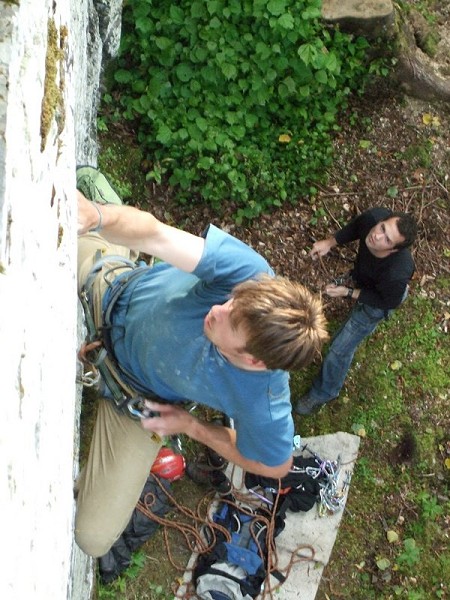
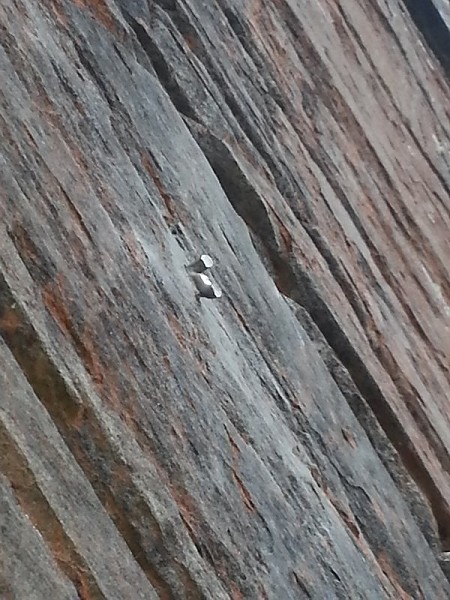
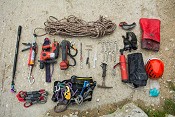
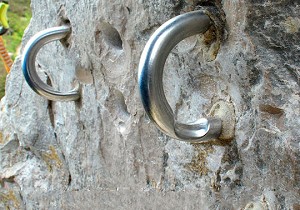
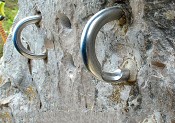
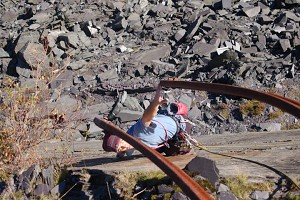









Comments